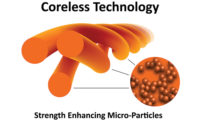Innovations in cut-resistant work gloves solve common problems
Cutting-edge answers

If you’re still ordering the same cut-resistant gloves you were using five years ago, or maybe even just last year, you might be missing out.
The safety industry continues to make strides in the materials and technology used to create cut-resistant gloves, sleeves, and clothing. PPE that used to be made of stiff fabric that trapped heat and moisture is now available in a variety of materials that are more comfortable with each new innovation.
So while manufacturers are still asking themselves the same primary question – How do we protect workers from cuts and lacerations? They’re now giving equal consideration to asking – How can we make PPE comfortable enough to keep workers wearing it?
New innovations give you PPE that keeps your people comfortable in the cut-resistant levels they need to keep them safe – no matter what your environment.
Problem – Workers removing gloves to handle small parts
The good-intentioned idea of taking gloves off “just for a second” to tighten a screw, or order something online is about as reliable as our last New Year’s resolution. Gloves that come off tend to stay off – another reason comfort may be just as important as cut-resistance.
Solution – Light, flexible gloves that fit like a second skin
New core materials and innovations in yarn wrapping have brought you breathable, flexible, cut-resistant gloves weighing in at just a few grams more than a triple-A battery. These ultra-thin materials fit almost like a second skin. So they’re snug and flexible, allowing workers to pick up and manipulate very small parts. A glove that’s agile enough to make people forget they’re wearing it is a glove that will stay on through the whole job.
Problem – Extreme cut hazards with uncomfortable solutions
Metal and glass fabrication, automotive and aerospace manufacturing, and even large appliance assembly all involve extremely sharp materials. The traditional solution to protect against cuts was to weave steel wire into gloves, but this made them uncomfortable and stiff, making it hard to keep them on for jobs that required movement and dexterity.
Solution – Knit work gloves with extreme cut-resistance
The new ANSI Cut Standard that came out in 2016 expanded its old 0-5 scale to span from A1 through A9 and vastly increased the hazards it included. This made room for those extreme cut hazards and encouraged innovation. Manufacturers rose to the challenge and invented a combination of new core materials and new methods of yarn wrapping, making it possible to create gloves with incredible cut-protection that are still comfortable and flexible.
Problem – Jobs that involve both heavy oil and cut and abrasion hazards
Work that includes heavy, sharp materials and slick oils or lubricants are doubly dangerous – and that can make it doubly hard to keep workers comfortable. Cut-resistant shells along with palm coatings to enhance grip have been the solution of choice for some time. But oil tends to saturate most palm coatings very quickly, causing them to lose their grip and allowing seepage to make workers’ hands slick and uncomfortable inside the glove. Double-dipping a glove to help with saturation and abrasion resistance is one solution, but it comes with the sacrifice of dexterity and tactile sensitivity.
Solution – New technology in palm coatings
Here too, technology is the key as new palm coatings have emerged to solve the problem and keep workers comfortable and protected. Gloves have come onto the market recently that feature a cool, cut-resistant shell, followed by a nitrile-based dip to deflect moisture, and finished with another nitrile-based dip that actually absorbs oil. The oil absorption on the outside coupled with moisture deflection on the inside keep oil off of workers’ hands, maintain grip, and boost abrasion resistance to an unprecedented level.
Problem – Skin irritation
Traditionally, cut-resistant yarns were made with an inner core made of fiberglass, steel, basalt, or a blend of these and other materials. That core was wrapped in an outer shell made of cut-resistant material like HPPE or Aramid combined with a filler like polyester, spandex, or nylon. While this provides solid cut-resistance, over time the core fibers can break at the microscopic level and irritate the skin of workers who are prone to contact dermatitis.
Solution – Coreless yarns
Some of the industry’s biggest advancements in cut-resistance have focused on avoiding irritation and keeping hands cool. For those who are prone to contact dermatitis, coreless yarns are infused with strength-enhancing micro particles to provide cut-resistance without the core that can irritate sensitive skin. These materials are also cool to the touch, keeping workers’ hands comfortable in the heat.
More innovations on the horizon
While these are just four of the biggest innovations in cut-resistance, there are many more the industry will see in the future. Look for cut-resistant materials that go above and beyond 18-gauge for even softer, more flexible gloves. More PPE options with reflective treatments may be coming to the market to provide higher visibility. We might even start seeing PPE that glows in the dark, and new leaps in moisture management and cooling. Innovations are always driven by need. So if you have a problem without a solution, consult a safety manufacturer to see if your particular need might just spur the next revolution in safety.
Looking for a reprint of this article?
From high-res PDFs to custom plaques, order your copy today!








